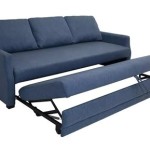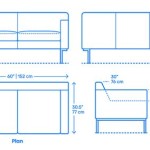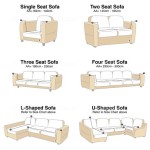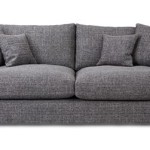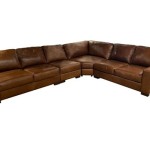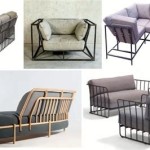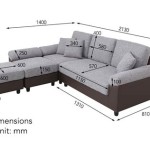Cinema Style Sofa: Bringing the Theater Experience Home
The cinema style sofa, a distinct category within the broader furniture market, offers a unique seating solution designed to replicate the comfort and functionality typically associated with movie theater seating. This style of sofa is often characterized by features such as reclining capabilities, integrated cup holders, storage compartments, and plush cushioning, all aimed at enhancing the at-home viewing experience. The increasing popularity of home theaters and dedicated media rooms has fueled demand for these specialized sofas, making them a significant consideration for consumers seeking to optimize their entertainment spaces.
Unlike traditional sofas intended primarily for general living room use, cinema style sofas are engineered with a specific purpose: to provide optimal comfort and convenience during prolonged periods of sit-down entertainment. This emphasis on functionality distinguishes them from other sofa designs, resulting in a product tailored to the requirements of dedicated movie enthusiasts and those seeking to create a more immersive viewing environment within their homes.
The design and construction of a cinema style sofa reflect its intended use. Manufacturers often prioritize features like power reclining mechanisms allowing for individualized adjustments of the seat and backrest. Durable materials such as high-quality leather or microfiber are common choices, owing to their resistance to wear and ease of cleaning. Furthermore, many cinema style sofas incorporate design elements that mimic the aesthetics of commercial theater seating, contributing to the overall ambiance of a home theater.
Before acquiring a cinema style sofa, it is important to consider several factors, including room size, seating capacity requirements, and desired features. Careful evaluation of these aspects will ensure that the chosen sofa not only fits comfortably within the designated space but also meets the specific entertainment needs of the household.
Key Point 1: Features and Functionality
The distinguishing characteristics of a cinema style sofa revolve around its features and functionality. Reclining mechanisms are a common and highly sought-after attribute, allowing users to adjust the seat and backrest to their preferred viewing angle. These mechanisms can be either manual or powered, with powered versions often offering greater precision and ease of use. Some models also include adjustable headrests and lumbar support, further enhancing comfort during extended viewing sessions. The inclusion of these features places cinema style sofas beyond the simple aesthetic purpose of regular sofas, enhancing their usability and purpose.
Integrated cup holders are another standard feature of cinema style sofas, providing a convenient location for beverages and preventing spills. Storage compartments, typically located in the armrests, offer a discreet space to store remote controls, magazines, or other accessories. Some more advanced models may even include features such as USB charging ports, allowing users to charge electronic devices without leaving their seats. These additions provide a seamless viewing experience as there is no need to leave the comfort of the sofa.
Beyond the functional aspects, the overall construction of a cinema style sofa often prioritizes comfort. High-density foam cushioning is frequently used to provide ample support and prevent sagging over time. The frame is typically constructed from durable materials such as hardwood or engineered wood to ensure stability and longevity. The integration of these elements ensures that the cinema style sofa provides consistent comfort and support for an extended lifespan.
Cinema style sofas can also be customized to individual preferences through modular designs. Modular cinema style sofas allow for the arrangement and rearrangement of seating sections, therefore adapting to the size and dimensions of the room. Additional features like tray tables or swivel bases can be added for increased convenience. These modular systems provide adaptability and customization, assuring the user that their sofa will fully meet their viewing and entertainment needs.
Key Point 2: Material Selection and Durability
The choice of materials plays a crucial role in determining the durability, comfort, and aesthetic appeal of a cinema style sofa. Leather and microfiber are two of the most popular upholstery options, each offering distinct advantages. Leather is prized for its luxurious appearance, durability, and ease of cleaning. Genuine leather develops a unique patina over time, adding to its character. However, leather can be more expensive than other materials and may require specialized care to maintain its condition.
Microfiber, a synthetic material, is known for its softness, stain resistance, and affordability. It is also relatively easy to clean, making it a practical choice for households with children or pets. Microfiber is available in a wide range of colors and textures, allowing consumers to find a style that complements their existing décor. While microfiber may not possess the same luxurious feel as leather, it offers a compelling combination of comfort, durability, and value.
The frame of a cinema style sofa is typically constructed from either hardwood or engineered wood. Hardwood frames are known for their strength and durability, providing a solid foundation for the sofa. Engineered wood frames, such as plywood or MDF, offer a more affordable alternative while still providing adequate support. The choice of frame material will depend on factors such as budget and desired level of durability.
The cushioning materials used in a cinema style sofa also contribute to its overall comfort and longevity. High-density foam is a common choice for seat cushions, providing ample support and preventing sagging over time. Fiberfill or down-filled cushions offer a softer, more plush feel, but may require more frequent fluffing to maintain their shape. The combination of various materials and construction techniques will influence the sofa's ability to withstand regular use and maintain its comfort over time.
Key Point 3: Spatial Considerations and Layout
Before purchasing a cinema style sofa, it is essential to carefully consider the dimensions of the room in which it will be placed. Measuring the available space and planning the layout will help ensure that the sofa fits comfortably and does not obstruct traffic flow. It is also important to consider the viewing distance from the television screen or projector, as this will influence the optimal seating arrangement.
Cinema style sofas are available in a variety of configurations, including straight rows, curved designs, and modular arrangements. Straight rows are a simple and straightforward option that works well in rectangular rooms. Curved designs can create a more intimate and immersive viewing experience, particularly in larger rooms. Modular arrangements offer flexibility, allowing users to customize the sofa to their specific needs and preferences.
In addition to the sofa itself, it is important to consider the placement of other furniture and accessories in the room. Coffee tables, side tables, and lighting fixtures can all contribute to the overall ambiance and functionality of the space. Adequate spacing between the sofa and other furnishings is essential to ensure comfortable movement and prevent a cluttered feel. Strategic placement of these additional elements will ensure a comfortable and well-organized home theater.
The layout of a home theater should also take into account factors such as acoustics and lighting. Soundproofing materials can help to minimize external noise and improve the audio quality of the viewing experience. Dimming lights or blackout curtains can reduce glare and enhance the contrast of the television screen or projector. Addressing these aspects will create a more immersive and enjoyable viewing environment.
The inclusion of risers or platforms is a factor that can elevate the back rows of cinema style seating, improving the viewing angles for all occupants. These platforms are especially useful in larger home theaters where multiple rows of seating are desired. By raising the rear seating, viewers in the back are less likely to have their view obstructed by those in front. The addition of risers or platforms further emulates the experience of a commercial movie theater.

Camargue Cinema Sofa Italian Style Sets
Top 6 Night Home Cinema Sofa Must Haves Dfs

3 Seater Cinema Sofa Plush Velvet Fabric Style Seating Living

Chester Cinema Sofa Celebrity Interiors
Top 6 Night Home Cinema Sofa Must Haves Dfs

Bespoke Cinema Sofa Crystal Comfort Beds Sofas
Top 6 Night Home Cinema Sofa Must Haves Dfs

Bella Cinema Sofa Cupholders Home Interiors

Munich Home Cinema Sofa Delux Deco

Hatch Cinema Couch Large Boucle Couchek

